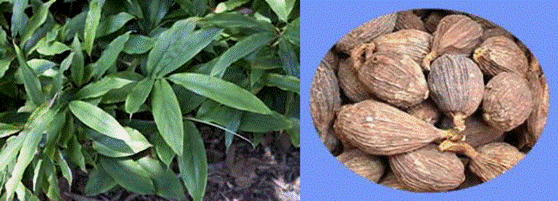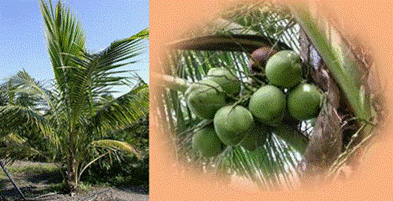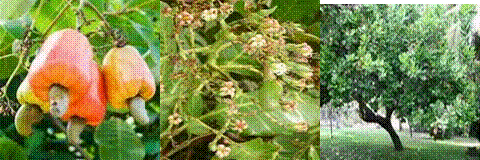ECOLOGICAL REQUIREMENTS
o Altitude: Grown in high altitude since it demand acidic soils and high rainfall (about the height of 1500-1800m a.s.l)
o Temperature: 20-25c
o Rainfall: 1500-1700mm/ annum
o Soils: Well drained pH 4-6 (acidic soils)
FIELD MANAGEMENT
Propagation
Seeds
Vegetative
Using seeds
Seeds should be obtained from plants with desirable (good) qualities.
Tea seeds germination is uneven due to roughness of seed coat, so pre-germinations necessary for ensuring uniform (even) germination.
NB:
Seeds usually have a high segregation, so cuttings are more preferred.
Seeds are selected by floatation test where seeds are immersed in water for 24 hours, all seeds floating are discarded.
Seed should be pre-germinated by covering them with wet sacks, and then planted in the nursery beds about 2.5cm at 13-15cm spacing.
Seedlings are ready when they attain 12-13cm thickness after 2yrs
Seedlings are lifted from the ground and the part which is above the ground is cut to 10cm stump.
Qualities of good mother plant
Should have dark green leaves.
Should not be too brittle.
Should have an ability to repair the dam aged tissues quickly.
Should have less number of Banjhi shoots (not more than5)
Plants with too much hair on their leaves should be discarded.
Cuttings
Mother trees are allowed to grow for about 6 months after pruning thus providing long stems for cutting.
Single leaf internodes cutting are usually used. The top 2or 3 internodes of each stem and the portion towards the base of the stem should be discarded.
The top cut must be made near the auxiliary buds as possible and the lower cut must slop/ slant.
Cuttings are planted in the polthene sheet as tube of 25cm disturbances.
Cutting are ready for transplanting in the main filed when the roots reached the bottom of the sleeves and when 20cm high. This is attained after 6-10 months in the nursery.
Cuttings are immersed in water to maintain the same turgidity before planting.
Land preparation
Site selection
Avoid-heart site (settlement)
cattle bomas
charcoal burning site
This is because they have high pH level.
Holes are dug at a depth of 30cm and size is 30cmx30cm at a spacing of 1.5mx0.7m or 1.2mx0.9m.
Shade trees should be planted along field boundaries; common shade trees used is Hokea saligna, Gravellia Robusta or Spathode nilotica (Africa Nandi flane)
Fertilizer application
1132 of leaves take 62kg of N from the soil hence N application is important. This has to be applied 3 months after planting until the crop is at economic level using NPK at a ratio of 25:5:5.
NB: CAN fertilizers should not be used as it limit the uptake.
Phosphorus (P) deficiency leads to Die back while potassium (K) deficiency leads to scorching effects i.e. leaves turn dark green with dark brown margins and later defoliate.
Sulphur (S) deficiency results to yellowing leaves.
Nitrogen fertilizer (i.e. NPK) should be applied 110-120kg N per hact and Phosphate fertilizers should be 27kg P2O5per hact.
MULCHING
It is important at early stages, but later stages, plant provides their own mulch when pruning is done.
Pruning/ frame formation/ plucking table
The process falls under two stages.
i. Formative
ii. Pegging
I. Formative stage (frame formation )
This is done by stimulating lateral growth to grow sideways so as to have a wide and continuous frame for plucking table.
This starts when plants reaches 30-35cm after one year, the plant is cut 15cm from the ground.
Lateral roots will grow and left to attain a pencil size thickness, the plant is cut down to 27cm from the ground.
It takes 2-3 yrs to reach the convenient height.
Generally 12cm-13cm is added every year until the plant reaches 60cm tall.
II. Pegging
After formation of the frame new shoots are allowed to grow for 3months. These are remo0ved by the process known as TIPPING (This is the removal of 3 leaves and a bud from the tips of the shoots which grow above the require height)
This process is done by hand and a wooden frame is used to give a correct tipping height.
This is done at 2-3weeks interval. The maintenance foliage should be 20cm-30cm deep.
Pegs are prepared for each shoot to be pegged.
Two rows of branches on either side of the stem are pegged such that the stem radiates outwards.
MAINTENANCE COLLAGE
Removal of Bhanjhi shoots
These are dormant shoots with hard leaves due to prolonged production of several leaves. These shoots have to be removed once they appear above the plucking table.
Pests
o Leaf minor
o Trips: They sack the cell sap of the plant and cause leaf defoliation.
o Mites
Disease
o In East Africa only Armillaria root rot which cause root decay is common.
Control:
o Proper land preparation
o Removal of affected plants.
HARVESTING (TEA PLUCKING)
Plucking: This is the process of tea harvesting.
Methods of Plucking
i. Fine plucking: This involves tipping 2 leaves and a bud. This produce high quality tea.
ii. Coarse plucking: This involves picking more than two and a bud. This reduces plucking frequency.
iii. Hard plucking: This involves breaking of the tip of the shoot exactly the height of the plucking table.
This reduces the depth of the maintenance foliage.
iv. Light plucking: This involves picking 2 leaves and a bud after 3 leaves have been produced above the plucking table. This can be done once or twice on year.
NB: Plucking interval is 5-7 days depending on the condition and method of plucking used.
YIELD: Average 1500kg of leaves/ hect
CARDAMON

Scientific name: Celettaria Cardamomum
Uses:
Dry cardamom fruits are used as spice.
It is used as medicine.
Leaves are used for flavoring bread, cakes etc.
It is used as aromatic stimulant in some beverages e.g1. tea
It is used in preparation of some cosmetics.
Distribution
Tanga, Zanzibar, Rungwe (Mbeya)
ECOLOGICAL REQUIREMENTS
Altitude: Ranges from 750-1500m a.s.l
Rainfall: 1500mm-2500mm p.a.
Temperature 10c-30c
Soils: Deep fertile soil well supplied with humus
pH should be slightly acidic or slightly.
PROPAGATION
It can be propagated vegetative by division of rhizomes in small scale production.
Also seeds can be in large scale production.
Seeds are collected from fully ripe capsules (fruits) and then dried in shade and sown immediately. The mucilage can be removed by rubbing in ashes before drying them up.
Seedlings are transplanted when they are about 15cm tall (usually 3-4 months) at a spacing of 1.5mx3m.
FIELD MANAGEMENT
o Consists of weeding, mulching, removal of old and dry stems, filling the gaps, regulating the shade and manuring.
o Cardamon come to bearing 3years after transplanting and full bearing 4-5 years after planting.
o The economic life of cardamom is 10-15 years.
Pests
Thrips: (Thrips tabaci) Damage: Suckle the cell sap.
Control: Use of insecticides e.g. Dursban, Dursam.
Diseases
a) Leaf rot: Caused by bacteria
Damage: Causing rotting of leaves
Control: cultural practices e.g. field hygiene, crop rotation.
b) Mable disease
HARVESTING
o The fruits are harvested just before they fully dry in order to prevent the capsule from splitting when left fully dry.
o Fruits are sun dried or treated artificially by heat.
o Dried capsules are winnowed to remove pedicels and foreign material.
YIELD
Dry capsule; 112-200 kg/ hect/ annum
Market: towns and lockets exported.
COCONUT

Scientific name: Cocos nicifera
Origin: Asia and South Europe (East India)
Distribution in coastal areas like Tanga, Dar es Salaam, Morogoro, Pwani.
Varieties
Classified according to height.
a) Tall varieties
i. Most popular in East Africa.
ii. Germination of the nut occur after 2 ½-3 months.
iii. Have strong stems which can grow up to 35m early.
iv. They can produce 50-80 nuts/ year for 60-100 years
v. First bearing is after 6 or 5-10 years
vi. Maximum period is after 9-10years
vii. Produce big sized nuts with thick copr1a and high oil content.
b) Dwarf varieties
i. Takes a short time to germinate 1 ½-2 months.
ii. Economic life is short i.e. 30-40 years.
iii. Maximum production starts 5-6 years.
iv. Have small nuts with thin copra and low oil content.
v. Produce 150-200 nuts/ year
vi. There are preferred because of easy harvesting, high yield, resistant to lethal yellow disease
Disadvantages of dwarfs
o Susceptible to strong winds and dry conditions.
o Susceptible to rhinoceros beetle because they are succulents.
o Limits inter-cropping.
Examples:
Tall: East African tall, West Africa tall, Polynesian African tall.
Dwarf: Malaysian yellow dwarf, Malayan red dwarf, Cameroon yellow dwarf, Brazilian green dwarf, Equatorial green dwarf, Mawa, Camwa
Uses:
Oil, which is obtained from the white flesh of mature dry nuts i.e. copra (contains 65-70% oil) which used for cooking of tening the slanets.
Coconut juice (milk) for drinking.
Palm wine (mnazi) is extracted from un opened (young) influence.
Leaves can be used for thatching and making baskets.
Midrib of leaves can be used for making fences also for fire wood and making of brooms.
Making of mattresses from course brown fibres.
The endocarp can be used in making cups calabashes.
Poles can be used for building houses
ECOLOGICAL REQUIREMENTS
o Altitude: 0-1000m a.s.l.
o Rainfall: Well distributed of over 120mm per annum optimum 2500mm.
o Temperature: 27c- 28c
o Soil: Deep well drained and aerated light sandy soils with pH of 5.0-8.0
PROPAGATION
Nursery:
Should be near permanent source of water.
Select medium sized nuts since they absorb water faster.
Plants in trenches (horizontally) leave a small portion unburned.
Frequent irrigation should be done.
Seedling is ready for transplanting when they produce 6leaves (2 month old).
Main field:
Old stumps and leaves should be burned to control rhinoceros beetle.
Mix FYM, TSP, CAN, MCPA, Magnesium Sulphate in 6-12m (hole)
Spacing: 9×9 tall varieties, 7×7 m short varieties.
Depth: deep, there can be 120-140 plants/ hectare
Preparation and planting
Propagation by seeds “seed nuts” planted in nursery trenches where seedling is maintenance for 9-12 months when they have 3-4 leaves.
Transplanted at beginning of rains. Holes 60cm are dug someday in advance. Nuts of seedling are planted 30-45cm below surface.
Field maintance
NPK 500g/ tree/ year.
Nitrogen should be applied to increase number of flowers.
Weeding done around the stem using hand hoes.
Herbicides application e.g. Paraquat, atrazine.
Pest and Disease control
Pests
1. Rhinoceros beetle: Orycytes monocerous
Damage:
Stuck the terminal bud.
Destroy the unopened leaves and the growing point.
When attacked leaves open they produce v-shaped notches.
Leaves dry up.
Control:
Destroy all decaying trucks, stems, leaves by burning.
Using wire to pierce the beetle.
2. Coreid bug: Pseudotheraptus wayii
Damage: -Suck the juice on young nuts and cause cracklings on the nuts and drop off.
Control: -Biological control by Ocephylla Longinoda i.e. Majimoto ants
3. Termites and other sucking insects.
Control: – Dust with Aldrin around trees.
Diseases
i. Bole rot
Cause: -Fungus Marasuniellus- Cocophilus
Symptoms: -Yellowing of leaves and wilting of plants
Control: – Avoid damaging the roots.
-Avoid infected seedlings.
ii. Lethal yellow disease (viral)
Symptoms: -Light brown irregular lesion starting at the tip of young leaves.
Control: -No chemical control.
-Uproot affected plants.
Harvesting and produce yield:
-First bearing 5-10 years after transplanting.
-Full bearing 10-18 years
-Nuts harvested 7-10months after flowering.
-For copra production, harvesting at full maturity.
Yield: -15-30 nuts per tree
Products from nuts
Margarine, oils, soaps, mattress struffing, baskets, etc.
Dried leaves are used to thatch mats and baskets.
 CASHEW NUTS
CASHEW NUTS
Scientific name: Anacardium Occidentale
Origin: America
Distribution: Ruvuma, Lindi and Tanga in Tanzania
Uses
Cashew nuts apple is used in alcohol brewing.
The apple can be eaten as it provides vitamins to the body.
The stems and branches once dry are used as firewood.
Nuts can be used as food.
Roots used as medicine
Provides the country with forex when sold to outside countries especially cold countries because of oils content used to keep the body warm.
Provides us with oil.
ECOLOGICAL REQUIREMENTS
Altitude: 0-750m a.s.l.
Temperature: favors temperature up to 35c
Rainfall: 750-900mm per 1annum
Soil: Well drained soil with acidic pH 4.5-6.5 i.e. acidic soil
PROPAGATION
The crop is directly propagated using the seeds e.g. the nuts. Also the crop can be propagated by air layering and grafting methods but the use of seeds is more preferable, it should be noted that heavy seeds are most viable. Seed beds are first prepared and these require careful clearing and burning well before sowing.
Sowing is done at the beginning of rains Holes are dug 30cm wide and 5.0-7.5cm deep, seeds are planted 2.5cm apart in each hole. Spacing is 12mx12m or 15mx15m
Field management
Temporary shades are provided over young seedlings.
Thinning is done to one plant per hole after one year.
Pruning might be necessary in the first three year.
Weeding around trees helps during harvesting.
Fertilizer/ manure application is not important or essential for the crop since the crop undergo intense (massive) foliage i.e. dropping of many leaves on to the ground, this act leads to the formation of humus as the leaves decomposes on the ground thus, there will be addition of nutrients in the soil hence no need of adding nutrients by the use of manure nor fertilizer.
But if deficiency of an element e.g. boron deficiency fertilizer containing required amount of the element needed.
Pests and diseases
Pests
i. Sucking insects e.g. helopelts bug
Damage: These suck the cashew apple
Control: Use of DDT and BHC sprayers or dust Diseases
Harvesting:
First bearing if after 3 years.
Full bearing is after 8-10years from sowing.
After the fruit has (cashew apple) ripened, It drops down to the ground together with the cashew nut whereby it can be collected.
When the cashew nut apple may be left on the ground where it may or may not sprout (develop into a seedling) when splashes of rainfall are present or if the cashew apple is collected it may be eaten or may be used in alcohol brewing.
Processing
A place where cashew nut processing is mostly done in Tanzania is TANITA
After the cashew apple and the cashew nut drops on the ground, the nut is taken and dried for 3-4days.
Roasting is done after the crop is already dry
Take off the outer cover i.e. separate the kernel (the eaten part) from the outer cover by bursting it thus after busting take of the kernel and the cashew nut “Kernel” is ready for eating.
Yield
600kg-1000kg/ hect or 590-1100 kg/ hect
NB: For a better quality outcome of the crop (products) motorized sprayers containing sulphur compounds to be used to kill the sucking insects which hinders the crops production.